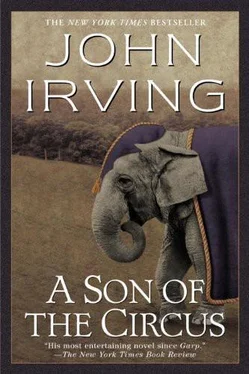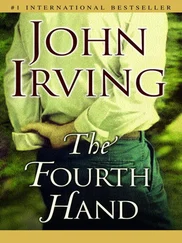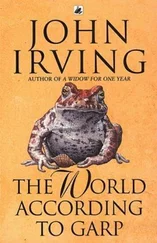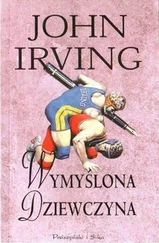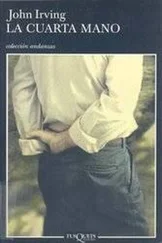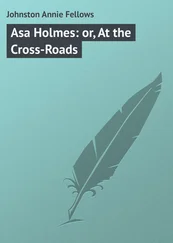The feeling for vengeance toward Dhar was especially strong among the eunuch-transvestite prostitutes. In the movie, a eunuch-transvestite prostitute turns out to be the serial cartoonist and killer. This was offensive to eunuch-transvestites, for by no means were all of them prostitutes—nor were they ever known to be serial killers. They are an accepted third gender in India; they are called “hijras”—an Urdu word of masculine gender meaning “hermaphrodite.” But hijras are not born hermaphrodites; they are emasculated—hence “eunuch” is the truer word for them. They are also a cult; devotees of the Mother Goddess Bahuchara Mata, they achieve their powers—either to bless or to curse—by being neither male nor female. Traditionally, hijras earn their living by begging; they also perform songs and dances at weddings and festivals—most of all, they give their blessings at births (of male infants, especially). And hijras dress as women—hence the term “eunuch-transvestite” comes closest to what they are.
The mannerisms of hijras are ultra-feminine but coarse; they flirt outrageously, and they display themselves with sexually overt gestures—inappropriate for women in India. Beyond their castration and their female dress, they do little to otherwise feminize themselves; most hijras eschew the use of estrogens, and some of them pluck their facial hair so indifferently, it’s not uncommon to see them with several days’ growth of beard. Should hijras find themselves abused or harassed, or should they encounter those Indians who’ve been seduced by Western values and who therefore don’t believe in the hijras’ “sacred” powers to bless and curse, hijras will be so bold as to lift their dresses and rudely expose their mutilated genitals.
Dr. Daruwalla, in creating his screenplay for Inspector Dhar and the Cage-Girl Killer , never intended to offend the hijras—there are more than 5,000 in Bombay alone. But, as a surgeon, Farrokh found their method of emasculation truly barbarous. Both castration and sex-change operations are illegal in India, but a hijra’s “operation”—they use the English word—is performed by other hijras. The patient stares at a portrait of the Mother Goddess Bahuchara Mata; he is advised to bite his own hair, for there’s no anesthetic, although the patient is sedated with alcohol or opium. The surgeon (who is not a surgeon) ties a string around the penis and the testicles in order to get a clean cut—for it is with one cut that both the testicles and the penis are removed. The patient is allowed to bleed freely; it’s believed that maleness is a kind of poison, purged by bleeding. No stitches are made; the large, raw area is cauterized with hot oil. As the wound begins to heal, the urethra is kept open by repeated probing. The resultant puckered scar resembles a vagina.
Hijras are no mere cross-dressers; their contempt for simple transvestites (whose male parts are intact) is profound. These fake hijras are called “zenanas.” Every world has its hierarchy. Within the prostitute community, hijras command a higher price than real women, but it was unclear to Dr. Daruwalla why this was so. There was considerable debate as to whether hijra prostitutes were homosexuals, although it was certain that many of their male customers used them in that way; and among hijra teenagers, even before their emasculation, studies indicated frequent homosexual activity. But Farrokh suspected that many Indian men favored the hijra prostitutes because the hijras were more like women than women; they were certainly bolder than any Indian woman—and with their almost-a-vagina, who knew what they could imitate?
If hijras themselves were homosexually oriented, why would they emasculate themselves? It seemed probable to the doctor that, although there were many customers in the hijra brothels who were homosexuals, not every customer went there for anal intercourse. Whatever one thought or said about hijras, they were a third gender—they were simply (or not so simply) another sex. What was also true was that, in Bombay, fewer and fewer hijras were able to support themselves by conferring blessings or by begging; more and more of them were becoming prostitutes.
But why had Farrokh chosen a hijra to be the serial killer and cartoonist in the most recent Inspector Dhar movie? Now that a real killer was imitating the behavior of the fictional character—the police would say only that the real killer’s drawing was “an obvious variation on the movie theme”—Dr. Daruwalla had really gotten Inspector Dhar in trouble. This particular film had inspired something worse than hatred, for the hijra prostitutes not only approved of killing Dhar—they wanted to maim him first.
“They want to cut off your cock and balls, dear boy,” Farrokh had warned his favorite young man. “You must be careful how you get around town!”
With a sarcasm that was consistent with his famous role, Dhar had replied in his most deadpan manner: “You’re telling me.” (It was something he said at least once in all his movies.)
In contrast to the lurid agitation caused by the most recent Inspector Dhar movie, the appearance of a real policeman among the proper Duckworthians seemed dull. Surely the hijra prostitutes hadn’t murdered Mr. Lal! There’d been no indication that the body had been sexually mutilated, nor was there a possibility that even a demented hijra could have mistaken the old man for Inspector Dhar. Dhar never played golf.
Detective Patel, as Dr. Daruwalla had guessed, was a deputy commissioner of police—D.C.P. Patel, officially. The detective was from Crime Branch Headquarters at Crawford Market— not from the nearby Tardeo Police Station, as Farrokh had also correctly surmised—because certain evidence, discovered during the examination of Mr. Lal’s body, had elevated the old golfer’s death to a category of interest that was special to the deputy commissioner.
What such a category of interest could be wasn’t immediately clear to Dr. Daruwalla or to Inspector Dhar, nor was Deputy Commissioner Patel inclined to clarify the matter promptly.
“You must forgive me, Doctor—please do excuse me, Mr. Dhar,” the detective said; he was in his forties, a pleasant-looking man whose formerly delicate, sharp-boned face had slightly given way to his jowls. His alert eyes and the deliberate cadence of the deputy commissioner’s speech indicated that he was a careful man. “Which one of you was the very first to find the body?” the detective asked.
Dr. Daruwalla could rarely resist making a joke. “I believe the very first to find the body was a vulture,” the doctor said.
“Oh, quite so!” said the deputy commissioner, smiling tolerantly. Then Detective Patel sat down, uninvited, at their table—in the chair nearer Inspector Dhar. “ After the vultures,” the policeman said to the actor, “I believe you were the next to find the body.”
“I didn’t move it or even touch it,” Dhar said, anticipating the question; it was a question he usually asked—in his movies.
“Oh, very good, thank you,” said D.C.P. Patel, turning his attention to Dr. Daruwalla. “And you , most naturally, examined the body, Doctor?” he asked.
“I most naturally did not examine it,” Dr. Daruwalla replied. “I’m an orthopedist, not a pathologist. I merely observed that Mr. Lal was dead.”
“Oh, quite so!” Patel said. “But did you give any thought to the cause of death?”
“Golf,” said Dr. Daruwalla; he’d never played the game but he detested it at a distance. Dhar smiled. “In Mr. Lal’s case,” the doctor continued, “I suppose you might say he was killed by an excessive desire to improve. He most probably had high blood pressure, too—a man his age shouldn’t repeatedly lose his temper in the hot sun.”
Читать дальше
